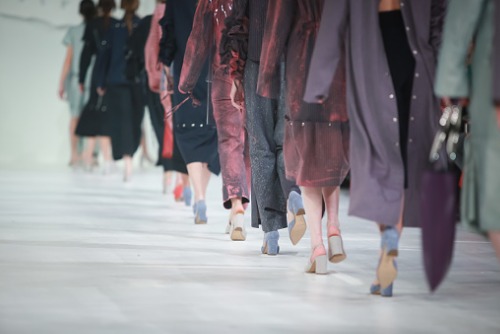

This month, two major fashion labels were forced to apologise and pull pieces of clothing after they were deemed offensive when appearing on the runway or for sale.
First, Gucci advertised a black balaclava style jumper with a pull up neck and exaggerated red lips that covered the mouth area. Online the jumper was accused of imitating blackface, and the brand apologised and pulled it from sale.
“We are truly committed in facing what happened as a crucial learning moment for everybody,” Gucci CEO, Marco Bizzarri said in a statement.
Then during London Fashion Week British label Burberry faced criticism after a hoodie with cords that resembled a noose was shown. Once again, social media users criticised the item, saying it glorified suicide. Even one of the models in the Burberry show, Liz Kennedy, posted on Instagram criticising the piece, and said that she had complained directly to the luxury fashion house as well.
“Suicide is not fashion,” Kennedy said. “There are hundreds of ways to tie a rope and they chose to tie it like a noose completely ignoring the fact that it was hanging around a neck. A massive brand like Burberry who is typically considered commercial and classy should not have overlooked such an obvious resemblance.”
Tim Hicks, head of schemes and speciality risks at Citynet Insurance Brokers, said that these online reactions are not uncommon, and that consumers will react swiftly if they feel a product isn’t up to standard.
“If there’s something wrong with a product, consumer reactions tend to flare,” he explained. “When emotions are in play, the ‘domino effect’ can take place – this is how smaller businesses can really take a hit as reputation makes a significant contribution to their success.”
While Burberry and Gucci may take a hit to their sales, ultimately the companies are unlikely to fold because of these mistakes.
But these high-profile incidents, which made headlines across the world, show the risks involved with brand name damage when selling a product that that is well known.
This is why many insurers are now offering reputation protection as part of their product recall insurance, especially to companies who are in more vulnerable positions.
Essentially, the cover offers some insurance if a company’s revenue or turnover drops a certain amount - usually a fixed amount like 10% - because of a damaging brand reputation event.
And it’s not as uncommon as you may think for a brand to be damaged both reputationally and financially because of these incidents.
In 2018, Aon and Pentland Analytics conducted a survey on damaging brand reputation events like product recalls, bad behaviour from executives or cyberattacks. The survey looked at 125 companies who experienced reputational crisis over a period of 10 years and found that these could have “long term negative consequences” for a business.
Overall, these damaging events led to either a 20% value add to a company, or a 30% loss, depending on how prepared the company was for the risk.
Interestingly, the impact on the company, which was measured by shareholder value, has doubled since the introduction of social media.
In a statement issued with the survey, enterprise client leader at Aon Randy Nornes said that reputation has always been placed high as a risk for the brokerage giant.
“Although risk management awareness and tools have evolved, reputation risk continues to weigh on corporate executives as one of their leading concerns,” Nornes explained.
“For the past 10 years, reputation risk has occupied one of the top spots on Aon’s bi-annual Global Risk Management Survey. Savvy companies that develop and use a robust risk management framework can not only better navigate reputation events but can often see a net gain in value post-event.”
And it’s not just high-end fashion houses at risk—when there’s an incident with a particular type food or beverage, it can damage an entire industry.
The infamous case of needles being found in strawberries in Australia in 2018 damaged the entire berry industry worldwide due to fear of copycats, despite the cases being very isolated.
The lesson here, according to Hicks, is not only insuring against risk should the worst happen but also using the other risk management tools an insurer or broker can provide, like consultancy to work out the exact needs of a business. In the case of the Australian strawberries for example, there is cover for malicious tampering of a product. This would be applicable in the case where a worker had placed the needles in the fruit.
Overall, the lesson seems to be that an unprepared company is going to lose out. New insurance measures like brand protection can help if you suffer losses because of reputation damage, but pairing it with risk management is always the much safer way to go.
